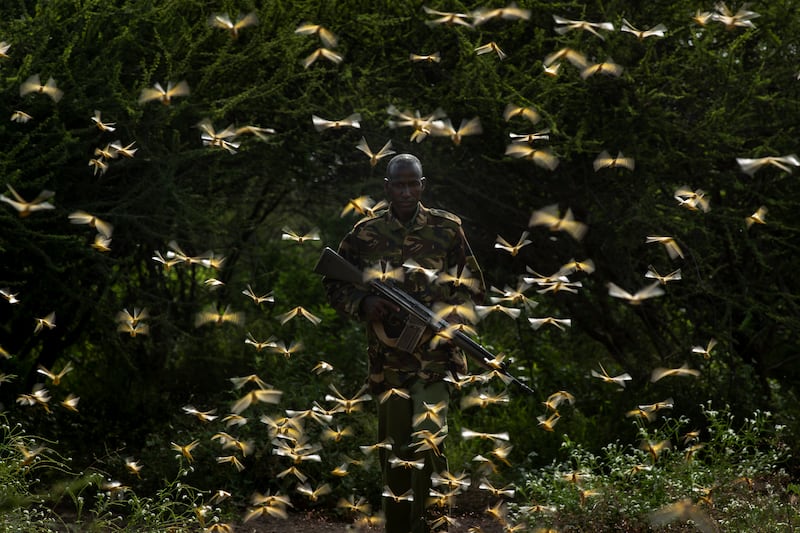View Comments
A second wave of locusts could swarm Africa soon, which could threaten food security on the continent, which is already preparing to deal with the coronavirus pandemic.
What’s going on:
- The offspring from locusts that swarmed Africa earlier this year are threatening to damage the continent in the coming weeks, The Wall Street Journal reports.
- The second wave would be 20 times as large as the first wave.
- The U.N. predicts the second wave’s locusts “could chew their way through 2 million square miles of pastureland, farms and gardens, around half the size of Western Europe,” The Wall Street Journal reports.
- Earlier this year, a breeding ground of locusts covered about the size of Manhattan. These locusts destroyed “farmland across eight East African nations as large as Oklahoma,” according to The Wall Street Journal.
What happened before:
- The biggest locust outbreak in 70 years washed over several African nations, putting millions of vulnerable people at risk. Farmers would “bang metal pans, whistle or throw stones to try to drive the locusts away. But mostly they watch in frustration, largely barred by a coronavirus lockdown from gathering outside their homes,” according to The Associated Press.
- Predictions of a second wave began in early April, according to The Associated Press.
- Yoweri Aboket, a farmer in Uganda, told the AP: “Once they land in your garden they do total destruction. Some people will even tell you that the locusts are more destructive than the coronavirus. There are even some who don’t believe that the virus will reach here.”
How the coronavirus plays a role:
- The locusts arrived before the coronavirus pandemic hit Africa.
- Due to coronavirus restrictions, supplies to battle the locust outbreak didn’t arrive until the middle of March, when a second wave of locusts began to hatch, according to The New Humanitarian. The new batch of locusts have already begun to mature.
- The New Humanitarian said: “While farmers had already harvested most of their crops by the time the first generation emerged, the latest swarms are coming at the start of the planting cycle, and as new seedlings — which locusts prefer over mature crops — begin to sprout.”
- Cyril Ferrand, the FAO’s resilience team leader for Eastern Africa, told The New Humanitarian: “The problem is big and will take a while to control.”


